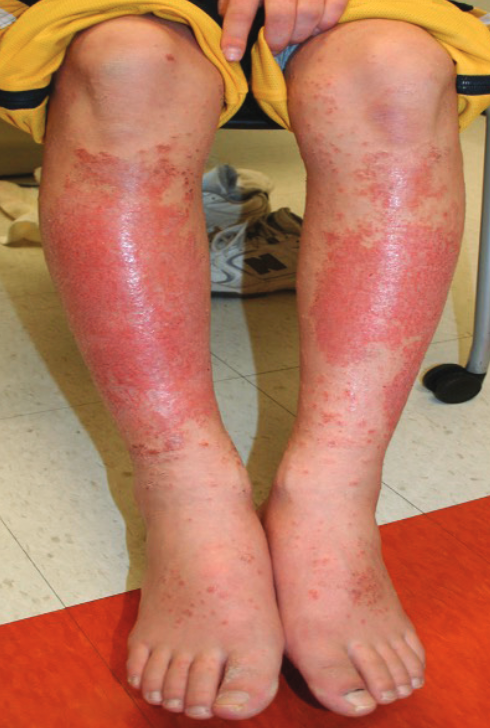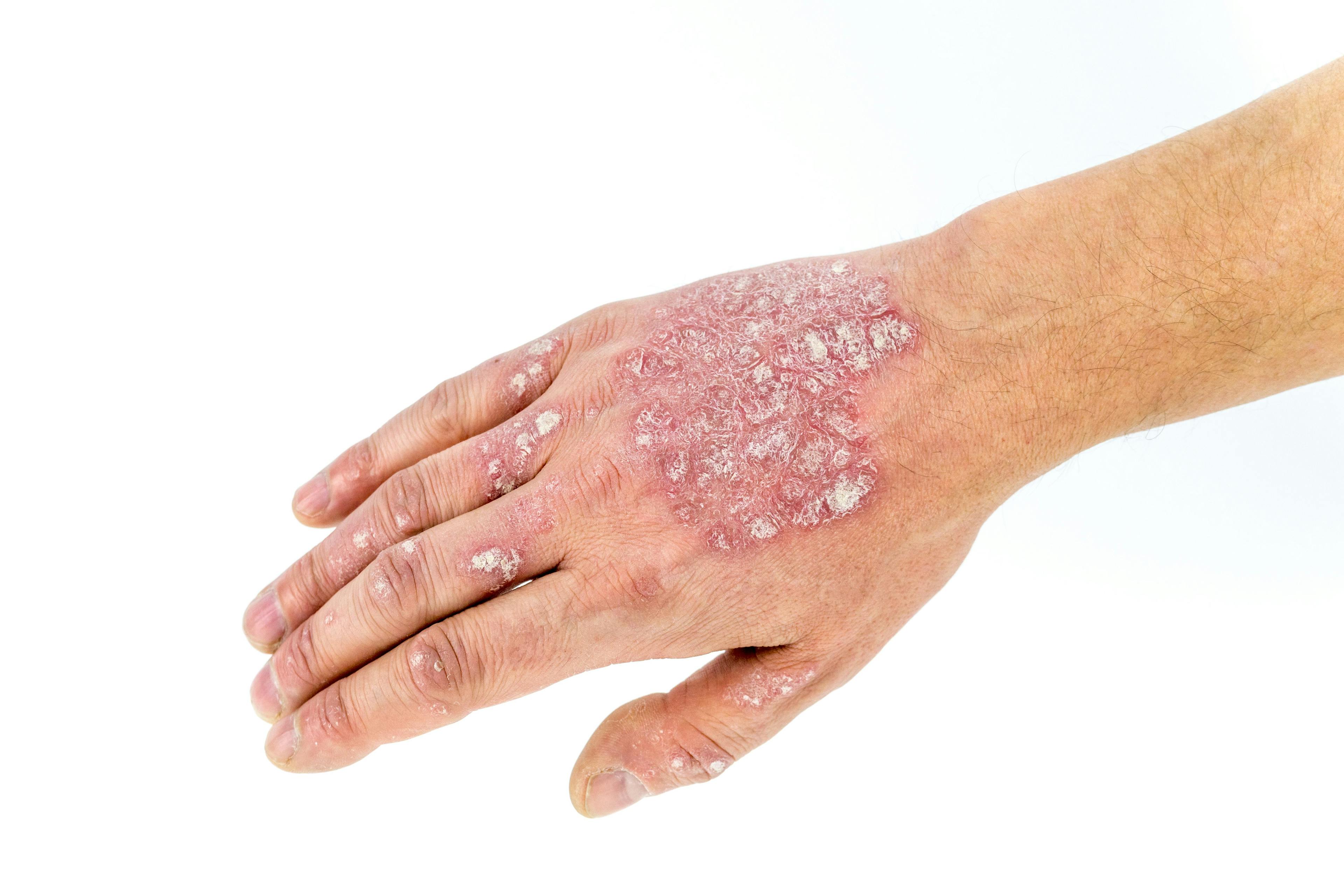- Acne
- Actinic Keratosis
- Aesthetics
- Alopecia
- Atopic Dermatitis
- Buy-and-Bill
- COVID-19
- Case-Based Roundtable
- Chronic Hand Eczema
- Chronic Spontaneous Urticaria
- Drug Watch
- Eczema
- General Dermatology
- Hidradenitis Suppurativa
- Melasma
- NP and PA
- Pediatric Dermatology
- Pigmentary Disorders
- Practice Management
- Precision Medicine and Biologics
- Prurigo Nodularis
- Psoriasis
- Psoriatic Arthritis
- Rare Disease
- Rosacea
- Skin Cancer
- Vitiligo
- Wound Care
Publication
Article
Dermatology Times
Managing Atopic Dermatitis in Skin of Color
Author(s):
Dermatology experts discuss atopic dermatitis treatment in skin of color patients in this DermView series recap.
Despite the recent significant advances in both topical and oral dermatologic therapy, atopic dermatitis (AD) remains a difficult-to-treat skin disease and can be particularly challenging in patients with skin of color. Three experts recently convened to discuss the nuances and recent developments in the quickly evolving treatment and management of this very common and potentially debilitating skin disease.
“Atopic dermatitis is certainly on the rise, and we’re not sure [whether] that’s because it’s increasing—which we think it is—or [because] it’s being diagnosed more often. This is something that will carry on into our conversations, because oftentimes, AD is misdiagnosed in patients who have darker skin,” said Angela J. Lamb, MD, director of the Westside Mount Sinai Dermatology Faculty Practice, associate professor of dermatology, system vice chair of Clinical Operations and Strategy, medical director of the Mount Sinai Doctors Patient Access Center, and chief technology officer, Department of Dermatology, Mount Sinai Hospital, New York New York.
There are distinct differences in AD among patients with White, Brown, and Black skin. African American patients with AD do not exhibit filaggrin mutations and have distinct attenuations of Th17 and Th1 axes activation, whereas Asian patients have a stronger Th17 and Th22 activation than both African American patients and White patients with AD. Future precision medicine therapies could enable more targeted treatments for patients with AD, according to the individual patient’s phenotype, Lamb explained.
In darker Fitzpatrick skin types, several different factors must be considered that can impact the severity of AD and disease exacerbation, including the different endotypes, immune mechanisms, barrier features, types of foods and allergens, water hardness, and bathing frequency.
“When talking to patients, we know a lot of cultural practices can come into play. If we’re scrubbing the skin too much, if we’re exfoliating—sometimes if we’re just using a washcloth or a loofah—that might contribute to exacerbating someone’s AD or skin condition,” said Omar Noor, MD, FAAD, medical director and co-owner at Rao Dermatology in New York and New Jersey.
There may be nuances to the way patients treat their skin that may be making it more difficult for physicians to help them improve their symptoms. Having good communication with patients, especially in dermatology but in all of medicine, is critical to providing the best care possible, according to Noor.
“Even more so, it is directing patients to the resources we want them to follow so they don’t get the wrong information, whether it be from social media, Dr Google, or the neighbor next door who knows more than we do. We always say, ‘Your Google search is not as good as my medical degree.’ So it’s probably worth having that same conversation,” said Neal Bhatia, MD, director of clinical dermatology at Therapeutics Clinical Research in San Diego, California.
Fortunately, therapeutic options in AD have expanded from corticosteroids, emollients, and antihistamines to also include novel biologics such as dupilumab (Dupixent) and tralokinumab-Idrm (Adbry), as well as oral and topical Janus kinase (JAK) inhibitors, including upadacitinib (Rinvoq) and abrocitinib (Cibinqo), and ruxolitinib (Opzelura), respectively.
“What I see so often with darker skin tones is that it’s not just the AD, it’s also the hyperpigmentation. [Patients] are really concerned about being scarred, so my threshold is a little lower. I want to talk to them about these new treatment options a little sooner sometimes, because they can have that lasting postinflammatory hyperpigmentation that can be so disfiguring. Ideally, if we can stop the cycle of the damage to the skin, the skin will repair itself,” Lamb said.
Along with the novel treatments that have recently become available, it is paramount that dermatologists maintain a high standard of care for their patients. This requires an in-depth consultation and discussion with patients about the Investigator Global Assessment (IGA) score, Eczema Area and Severity Index (EASI), and body surface area (BSA). Erythema is more difficult to assess in darker skin types and is a major component when evaluating patients for clinical trials. When it comes to skin of color, educating physicians begins with clinical trials.
The current mechanisms or tools used for evaluating erythema in clinical trials are flawed, Noor said. And because of those flaws in evaluating patients at baseline, the clinical trial percentages and results show physicians have grown accustomed to systemic and topical medications, do not fully encompass what type of benefit patients with darker skin types are getting, and may not fully capture the severity of some patients with darker skin types.
“All dermatologists should strive to incorporate EASI, BSA, IGA, Patient-Oriented Eczema Measures, and Dermatology Life Quality Index [scores] in their clinical assessments, because what we do in research can easily translate to clinical practice. It will help bring objective measures to how things are going [and] help get some of these systemic drugs covered. Unfortunately, I think a lot of dermatologists have given up the fight on trying to get the FDA-approved drugs covered, whether it’s biologics, JAK inhibitors, [or] others,” Bhatia said.
Because many of these new medications come in the form of a pill or injection, [adherence] remains an issue in patients with AD, which can be particularly true in the pediatric population. As such, Noor stressed the importance for physicians to effectively communicate the ins and outs of a patient’s AD condition and the different treatment options available to them, which can prove to be life-changing therapies.
“We are lucky now, in 2022, that we have more advanced therapeutic options for patients, and everything comes together as far as communication goes. After discussing all the options with patients regarding adverse effects, adverse events, and efficacy, the physician and patient can move forward together on the appropriate therapeutic path to take,” Noor said. “What I want my patients to know when I choose a medication for them is my comfort level with that medicine in the patients I’ve used it on, what I’ve grown to see in my patients through a multitude of skin types, and what they should expect to see. When they understand that in a very communicative way, they can appreciate what I think is going to happen, then we go from there. It [goes] back to better communication, which plays a large role.”
Setting the appropriate expectations for patients is also crucial. In patients with darker skin types, there’s some distrust with medicine, Noor said. There can be many reasons for this, starting with the clinical trials and some of the advertisements. It is the responsibility of the physician to effectively communicate this with patients in an educated way, according to Noor.
“Try to get ahead of and anticipate [the patient’s] concerns—that’s the art of good doctors. If we’re able to get ahead of what [patients] are going to ask about and give them confidence, that goes a long way and gives the doctor credibility that they know what they’re talking about,” Lamb said.

Newsletter
Like what you’re reading? Subscribe to Dermatology Times for weekly updates on therapies, innovations, and real-world practice tips.


























